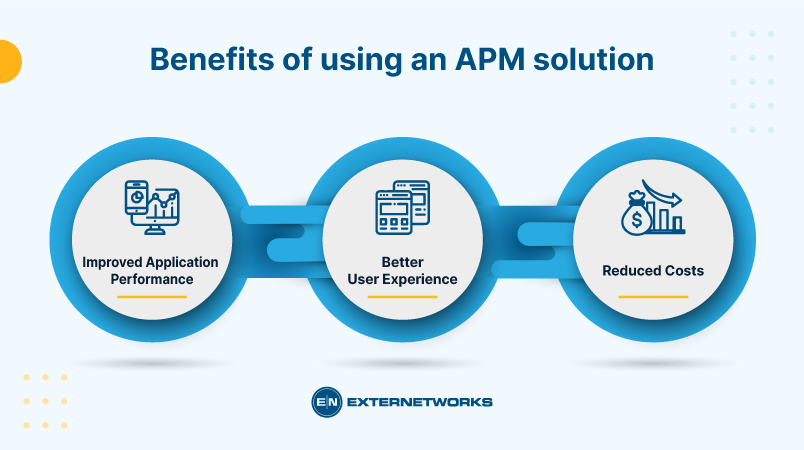28.4k views
Applications are becoming increasingly important to businesses, and they provide everything from customer service to sales to back office functions. Application Performance Monitoring (APM) is a technology used to monitor applications. It allows developers to see how well their applications perform under load, which helps them make informed decisions about how to scale them.
To successfully run an application, you must first understand its behavior. APM provides insight into how your app performs under load. This will help you identify bottlenecks and fix problems before they become serious issues.
Application performance monitoring (APM) collects data about how an application performs over time and across different environments. This includes gathering data about the performance of the software itself, such as response times, transactions per second, memory usage, and CPU utilization. In addition to application performance, it also collects data about the underlying hardware and operating system, including disk space, processor speed, RAM, storage capacity, and bandwidth.
The goal of APM is to monitor the performance of an application and determine whether it meets specific requirements. For example, some organizations require that web applications perform within one millisecond. If an application takes longer than one millisecond to respond, it might be considered slow.
Companies use APMs worldwide to manage their web applications, mobile apps, desktop apps, and other software products. They provide insights into how well these applications perform under different loads and conditions. These insights allow developers and IT administrators to make informed decisions about improving the performance of their applications.
There are many APM solutions on the market today. Some APM solutions focus primarily on gathering system metrics, while others focus more on analyzing application behavior. It is important to understand the type of data you want to collect and analyze and the type of analysis you would like to conduct.
For example, a metric-based APM solution might be ideal if you want to track the number of requests made to your web server over time. If you want to know whether your application is experiencing performance bottlenecks or memory leaks, then an application-focused APM solution might be better suited.
There are many reasons why you might want to implement an APM solution. Some examples include:
Using an APM solution provides several benefits, including:

Improved Application Performance – The APM solution helps improve application performance by providing detailed insight into how the application behaves under different loads and conditions, allowing developers to make changes to their applications accordingly.
Better User Experience – The APM solution allows users to monitor their applications anytime, anywhere, without waiting until the application goes live. This means that users can see exactly how their applications perform at any moment.
Reduced Costs – By reducing downtime due to poor application performance, the APM solution reduces the amount of maintenance needed to keep the application running smoothly. In addition, the APM solution enables IT administrators to identify potential problems early to take action to prevent outages. Finally, the APM solution saves money because it prevents costly repairs and upgrades.
In conclusion, APM provides valuable insights into performance, scalability, reliability, security, and other aspects of enterprise computing. It enables IT professionals to diagnose and resolve problems quickly and improve overall application performance.
